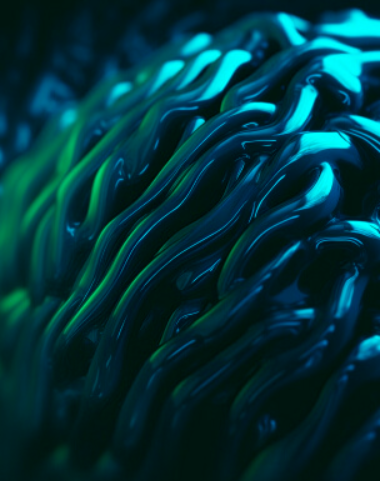Visual Inspection in Pharma 2025: The Future of Quality Assurance
- Global healthcare visual inspection services market expected to grow from $4.01 billion in 2024 with a CAGR of 9.97% through 2030.
- Emerging technologies like AI and automation are transforming visual inspection processes in the pharmaceutical industry.
- Specialized visual inspection machines for solid dosage forms are anticipated to thrive.
- Regulatory bodies enforce strict standards, making visual inspection processes critical for ensuring quality.
- Industry collaboration is essential for sharing knowledge and improving compliance standards.
Table of Contents
- Market Trends and Growth
- Technological Innovations
- Regulatory Expectations and Best Practices
- Industry Collaboration and Knowledge Sharing
- Key Challenges and Future Directions
- Conclusion
Market Trends and Growth
As organizations look for ways to optimize their inspection processes, the market for visual inspection services is experiencing a seismic shift. The surge in technological advancements has led to a wave of companies implementing automated and semi-automated inspection systems. This trend is not only boosting efficiency but also driving pharmaceutical and medical device companies to collaborate with specialized inspection service providers to maintain compliance and exceed quality assurance standards. These shifts underscore a broader trend toward outsourcing services to contract development and manufacturing organizations (CDMOs, CMOs, and CROs), thereby streamlining operations while enhancing oversight (Grand View Research).
Technological Innovations
AI and Deep Learning Integration
At the heart of this transformation lies AI-powered machine vision, a technology that enhances defect detection and dramatically reduces false rejections. Imagine a system that learns from historical data, continuously improving its accuracy—this is the promise of deep learning algorithms in visual inspection. As data accumulates, these systems become not only more effective but also adaptive, fostering robust quality control measures tailored to the pharmaceutical landscape (Grand View Research).
Advanced Imaging and Analytics
The future of visual inspection is further illuminated by innovations such as 3D vision systems and cloud-based analytics. These cutting-edge tools are capable of detecting microscopic defects that traditional methods often overlook, dramatically enhancing the level of scrutiny applied to pharmaceutical products. The precision afforded by these advanced imaging methods is essential for ensuring that product safety and efficacy remain paramount (Grand View Research).
Visual Inspection Machines for Solid Dosage Forms
Specialized visual inspection machines are aligned to take a leading role in 2025, particularly for capsules and tablets. As pharmaceutical companies continue to ramp up their investments in automation—spurred by the need for consistent quality assurance across various dosage forms—this segment is expected to thrive (Market Research Forecast).
Regulatory Expectations and Best Practices
The pharmaceutical landscape operates under the scrutiny of regulatory bodies that enforce strict standards for quality and integrity. Visual inspection processes have never been more critical, particularly for parenterals, which are inherently more susceptible to contamination. Key regulatory concerns include particulate matter detection, container-closure integrity, and the validation and documentation of inspection processes. It’s essential for organizations to stay updated with the latest best practices shared at forums and conferences, such as the Visual Inspection in Parenterals Summit 2025, which serve as critical venues for knowledge exchange (Uventia).
Industry Collaboration and Knowledge Sharing
Collaboration is crucial as the industry adapts to these rapid changes. Events like the PDA Visual Inspection Forum 2025 provide a platform for professionals to share insights, explore novel AI methodologies, and establish industry standards. These gatherings foster a spirit of co-development among stakeholders, encouraging the adoption of new technologies and processes that not only enhance compliance but also improve product quality. The pooling of collective knowledge ensures that organizations are not only keeping pace with innovation but are also pioneering advancements that elevate the entire industry (PDA, Uventia).
Key Challenges and Future Directions
As we look towards 2025, the complexities in manufacturing processes will continue to escalate, driving the demand for cost-effective, reliable, and scalable inspection solutions. Pharmaceutical companies must focus on product differentiation and intellectual property protection, with visual inspection being central to bolstering consistent quality for complex and high-value products. The pursuit of ongoing advancements in AI and automation will promise to enhance accuracy and efficiency, fostering a global shift towards digitized and data-driven manufacturing and inspection (Pharmaphorum).
Conclusion
In summary, visual inspection in pharma for 2025 is defined by rapid technological progress, regulatory rigor, and industry-wide collaboration—setting new benchmarks for product quality and patient safety worldwide. Organizations need to embrace these advancements not just for compliance but to thrive in an increasingly competitive landscape.
As a professional navigating this dynamic environment, consider the implications of these trends for your operations. Are your inspection processes equipped to meet the future’s stringent demands? The answers are as diverse as the technologies at play but rest assured, the experts at QPS Engineering AG are here to guide you through every step. To explore our services or connect with our team, reach out to us on LinkedIn.
The future of visual inspection is bright, and with it, the potential for unprecedented levels of safety and quality in pharmaceutical products. Be part of this evolution.






